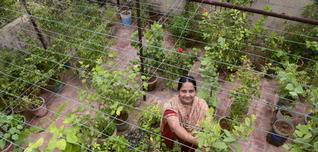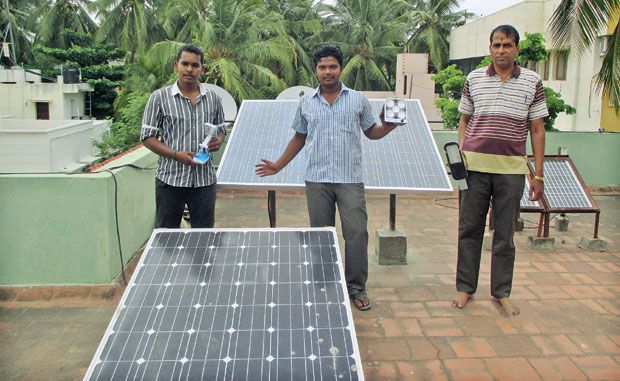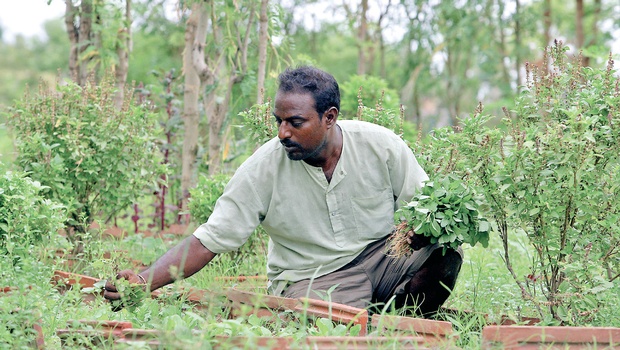
Subashree has proved a home garden is all it takes to have good health, good looks and a good life, says K. SARUMATHI
You have cold, she has the cure. You want to look good, she has the beauty solutions. You want to go green, she has the expertise to show you how.
If Subashree Vijay of Alwarthirunagar has a ready answer for any problem, it is because of her garden, pesticide-free and organic.
Subashree’s love for gardening knows no bounds, a fact illustrated by how she has let creepers cover the four walls of her house, on the outside. The backyard, terrace and every other available space has been utilised for growing plants. She cares for these plants as if they were her children. She offers others all her expertise on growing a home garden.
“I have always had an interest in gardening. It however took me a long time to get into it full-time. Now, every vegetable we cook is home-grown, pesticide-free and completely organic. Even my beauty products are all natural and made by me, at home,” says Subashree, who takes a particular interest in nurturing medicinal plants.
In her terrace are various herbs that can cure aliments. There are also vegetables such as lady’s finger, varieties of gourd, tomato, brinjal, beans, four types of chillies, 12 varieties of spinach and numerous flowering plants.
The organic fertiliser used in the garden is made at home, mixing buttermilk and coconut milk.
“I ferment and then sprinkle it on the plants. It is growth booster and results can be seen in a week. It is also safe to handle. Also, all garden wastes are swept and put into the pots to be turned into manure,” says Subashree, who also supplies liquid fertilizer to organic stores along with soil mixture and grow bags.
Her Atri Herbal nursery has 15 plant varieties, which have some use in the kitchen, are easy to grow and multiply. She also has ready-made garden kits for people, where she grows the plants and then gives them away. She also makes face packs and hair oil from the plants in her house and sells them under the banner of Atri Health Products.
Her plans for the future include helping people set up their own terrace gardens. “They need extra care and regular maintenance. You need to have passion for growing plants to have a blooming garden,” she adds. Subashree can be contacted at 96771 01627.
source: http://www.thehindu.com / The Hindu / Home> Features> Down Town / by K. Sarumathi / September 14th, 2014




